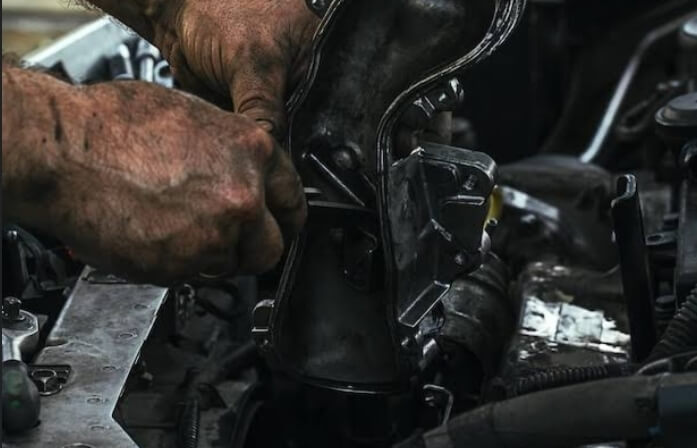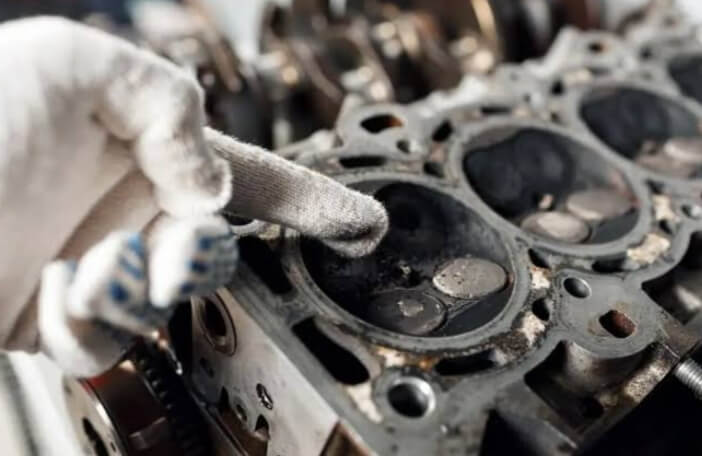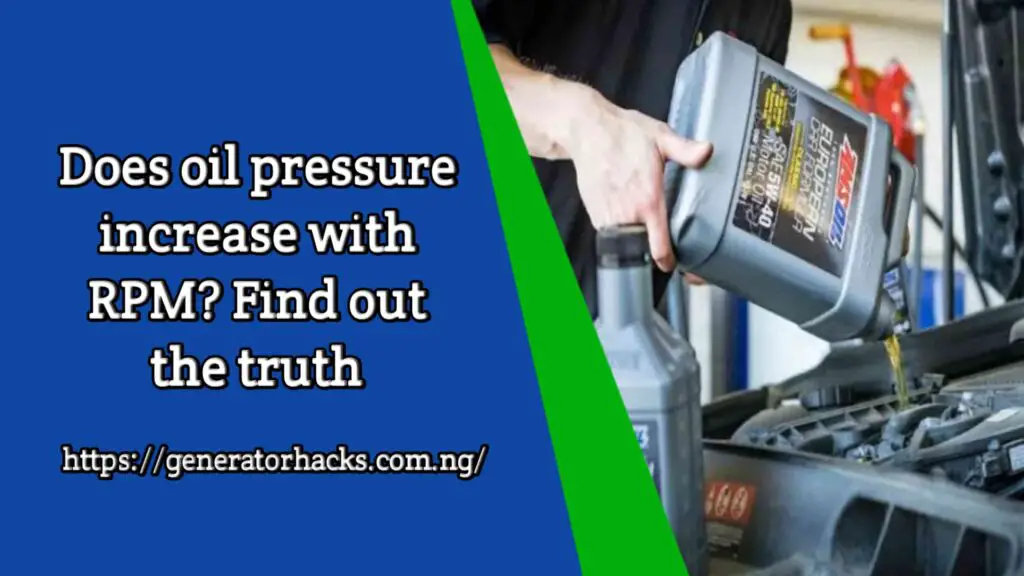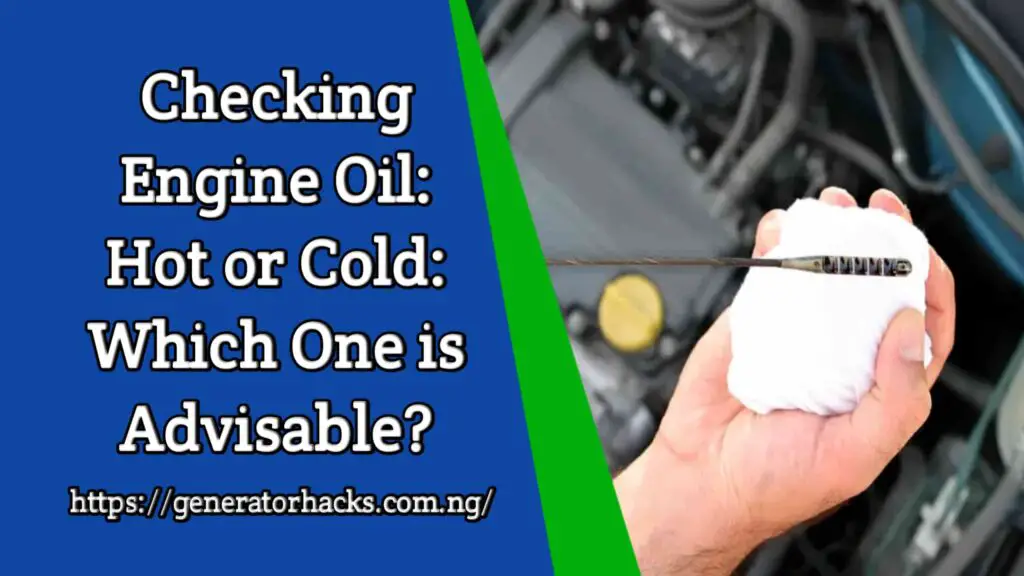As an Amazon Associate, we earn from qualifying purchases. This does not affect the price you pay or the quality of the products you buy. For more information, please read the full affiliate disclosure here.
Imagine this: you are using your engine on a rainy day, enjoying the sound of the raindrops, or using it where there’s a lot of water. Suddenly, you notice that your engine is making strange noises, losing power, or smoking. You stop and check the oil dipstick, only to find that it looks milky, foamy, or gray. What does this mean? It means that your engine has water in it, and that’s bad news.
Water in your engine oil is a nightmare that can ruin your engine and your performance. It can enter your oil system in various ways, such as condensation, leaky gaskets or seals, and even from washing your engine.
It can cause corrosion and metal deposits to form on engine parts, leading to decreased performance, increased fuel consumption, and eventually engine failure.
In this article, we will show you how to tell if you have water in your engine oil, how to fix it, and how to prevent it. Let’s get started!
How to Tell If You Have Water in Your Engine Oil

One of the easiest ways to tell if you have water in your engine oil is by using the dipstick. The dipstick is a metal rod that reaches into the oil pan to measure how much oil you have left in your engine. The dipstick can also show you the condition of the oil and if it has been contaminated by water.
Here are some signs to look for when checking your dipstick:
- Milky appearance: Water mixed with oil looks cloudy and milky. This is because water and oil don’t mix well, and they form tiny droplets that reflect light.
- Brown residue: If you notice a brownish residue just above the oil level, it could be an indicator of water in the oil. This is because water can cause rust to form on metal parts, and the rust can flake off and mix with the oil.
- Foamy oil: The presence of foam on the dipstick is another sign of water in the oil. This is because water can cause air bubbles to form in the oil, and the bubbles can create foam.
To confirm if there’s water in your engine oil, wipe the dipstick clean and insert it back into the engine. Remove it again, and check for any of the signs mentioned above. If you still suspect water in your oil, consult a professional for a thorough examination.
Another way to tell if you have water in your engine oil is by checking the color and texture of the oil. Good, clean oil should be in a range from a golden to brown color and be fairly thin and without much texture.
The oil that has been impacted by water will be milky and potentially lighter in color, like beige. The result may also be more runny than normal, as clean oil normally does a good job of sticking to the dipstick to make it easier to read.
RECOMMENDED READ:- FAQ: Is It Possible to Run a Generator in the Rain? (Answered)
How to Fix Water in Your Engine Oil
If you have water in your engine oil, you need to fix it as soon as possible to prevent further damage to your engine. Here are some steps you can take to fix water in your engine oil:
Step 1: Drain the oil.
The first step is to drain the contaminated oil from the engine. You can do this by removing the oil drain plug and letting the oil flow out into a container. Make sure you dispose of the oil properly and safely, following the local regulations.
Step 2: Replace the oil filter.
The next step is to replace the oil filter, which is a device that filters out impurities from the oil. The oil filter can also get clogged by water and rust, reducing its effectiveness. You can find the oil filter near the engine, usually in a cylindrical shape. You can unscrew it by hand or use a wrench, and then replace it with a new one.
Step 3: Refill the oil.
The final step is to refill the oil with fresh and clean oil. You can use the same type and grade of oil that your engine manufacturer recommends. You can find the oil cap on top of the engine, usually marked with the oil symbol. You can use a funnel to pour the oil into the engine, and then check the oil level with the dipstick. Make sure you don’t overfill or underfill the oil, as this can cause problems as well.
How to Prevent Water in Your Engine Oil

Water in engine oil is a problem that can be prevented with proper maintenance and care. Here are some tips to prevent water from entering your engine oil:
1. Check the oil regularly.
One of the best ways to prevent water from entering your engine oil is to check the oil regularly, at least once a month or before long-term use. This way, you can catch any signs of water contamination early and fix them before they cause more damage. You can also change the oil and filter every 3,000 to 5,000 hours, or as recommended by your engine manufacturer, to keep the oil clean and fresh.
2. Avoid using your engine in water.
Another way to prevent water in your engine oil is to avoid using your engine through water, especially deep or standing water. Water can splash into the engine compartment and enter the oil system through cracks or leaks. If you have to use your engine through water, do it slowly and carefully, and avoid revving the engine. After using your engine through water, check the oil for any signs of water contamination.
3. Fix any leaks or cracks.
A third way to prevent water from entering your engine oil is to fix any leaks or cracks in the engine or the cooling system. Leaks or cracks can allow coolant or water to mix with the oil, creating a harmful mixture. You can inspect the engine and the cooling system for any signs of leaks or cracks, such as drips, stains, or smells. If you find any, you should repair them as soon as possible or take your engine to a professional.
Final Thought
Water in engines is a serious problem you need to avoid by all means. You can tell if you have water in your engine oil by checking the dipstick, the color, and the texture of the oil. If you find any signs of water contamination, you need to fix it as soon as possible by draining the oil, replacing the oil filter, and refilling the oil. You can also prevent water in your engine oil by checking the oil regularly, avoiding using your engine through water, and fixing any leaks or cracks.
Share


